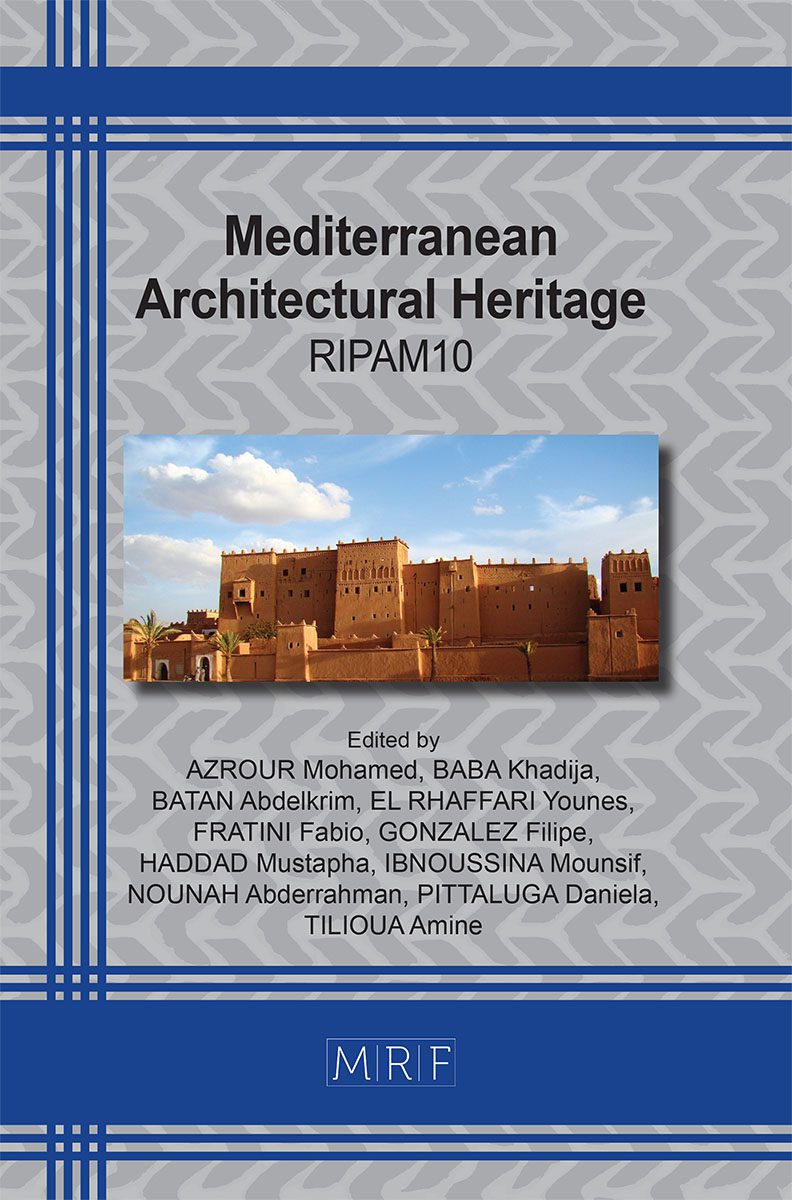Adaptation of Traditional Construction Methods for a Sustainable Transition of the Dwelling (Case of Riads in Fez and Hanoks in Seoul)
Rime EL HARROUNI, Iman BENKIRANE, Vincent BECUE
download PDFAbstract. Significant initiatives have been carried out by certain Moroccan organizations regarding safeguarding the Riads and Dars in Fez. Nevertheless, prior studies on the rehabilitation and restoration of traditional houses have only addressed the structural elements and thermal properties of the traditional environment, ignoring the spatial arrangement of the home and how it might be modified to better suit the needs and practices of modern residents. In reality, the production of newly effective technology involving structures and construction taking into account qualitative performances of the traditional dwelling has yet to be satisfactory specifically, as it is sparking a social discourse over the legitimacy of the traditional built design. This study aims to investigate the dissolution of the traditional dwelling in the medina of Fez to the degradation of the construction materials, and the safeguarding and rehabilitation Process of said dwelling. The main problem would be to answer: How to find the balance between the old and the new to provide a better quality of space? The defined method will take the form of a systemic comparative approach with the Korean model of dwelling called Hanok, to identify the similarities in terms of traditional methods of construction and the developed techniques used to transform said dwelling. For the sustainable development of these traditional habitat models, we need to establish specialized tools and a response plan for future Riads technology by comprehending consumer needs through: ongoing research on green technology to assess the usefulness of activities-oriented design in traditional homes and the improvement of natural materials in the rehabilitation process. Overall, this research aims to develop a specific scientific approach to transformation and adaptive reuse for sustainable habitability based on classifications of behavioral factors, technical factors, and contextual factors.
Keywords
Riad, Fez, Hanok, Seoul, Socio-Cultural Transition, Patio, Space Quality, Sustainable Transformation
Published online 3/15/2024, 8 pages
Copyright © 2024 by the author(s)
Published under license by Materials Research Forum LLC., Millersville PA, USA
Citation: Rime EL HARROUNI, Iman BENKIRANE, Vincent BECUE, Adaptation of Traditional Construction Methods for a Sustainable Transition of the Dwelling (Case of Riads in Fez and Hanoks in Seoul), Materials Research Proceedings, Vol. 40, pp 33-40, 2024
DOI: https://doi.org/10.21741/9781644903117-4
The article was published as article 4 of the book Mediterranean Architectural Heritage
![]() Content from this work may be used under the terms of the Creative Commons Attribution 3.0 license. Any further distribution of this work must maintain attribution to the author(s) and the title of the work, journal citation and DOI.
Content from this work may be used under the terms of the Creative Commons Attribution 3.0 license. Any further distribution of this work must maintain attribution to the author(s) and the title of the work, journal citation and DOI.
References
[1] F. Bellanger. Habitat(s) : questions et hypothèses sur l’évolution de l’habitat. L’aube, 1999.
[2] J. Revault, L. Golvin, A. Amahan, JP. Icheter, M.CH. Fromon. Demeures et palais de Fès. Edition du centre national de la recherche scientifique de Paris, 1985.
[3] National Hanok Center. Building a Hanok. Architecture and Urban Research Institute (AURI) 194, Jeoljae-ro, Sejong-si, Korea, 2017.
[4] J. Jihae Shon. Hanok Interventions, School of Architecture University of Hawaiʻi at Mānoa, 2011.
[5] JS. Choi. Understanding Koreans and Their Culture. Seoul: Her One Media, 2007.
[6] KM. Lee, SJ. Lee. Hanok Building Standards Guide. Architecture and Urban Research Institute National Hanok Center, 194, Jeoljae-ro, Sejong-si, Korea, 2015.
[7] T. Lao. Tao Te Ching, Broché, 2016
[8] K. El Harrouni, M. Ben Aicha, R. El Harrouni. Parametric Modelling and Traditional Architecture: Improving the thermal comfort of the traditional courtyard house in Morocco. MATEC Web of Conferences 149 (2018): 02051. https://doi.org/10.1051/matecconf/201814902051
[9] X. Casanovas, A. Marou, Q. Wilbaux, F. Cherradi. Réhabilitation et action sociale à Marrakech, Maroc L’amélioration du cadre de vie traditionnel. RéhabiMed. Centre Méditerranéen de l’environnement Marrakech, 2008.
[10] JY. Park, MH. Jun, EK. Cho. The Modern Architectural System Conception for each Part of the New-Hanok Type Public Building. KIEAE Journal, Vol. 18, No. 6, pp.103-110, 2018. https://doi.org/10.12813/kieae.2018.18.6.103












